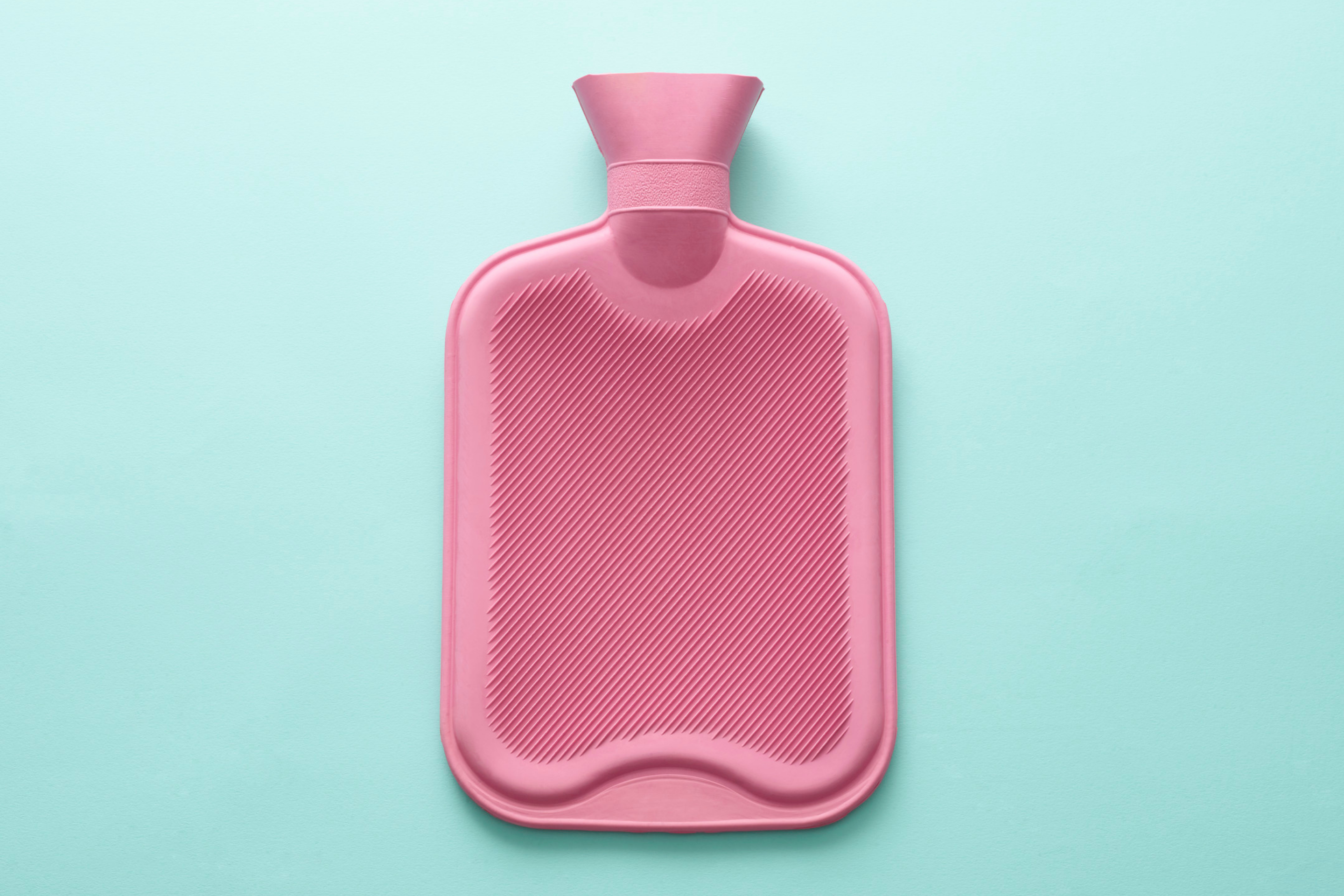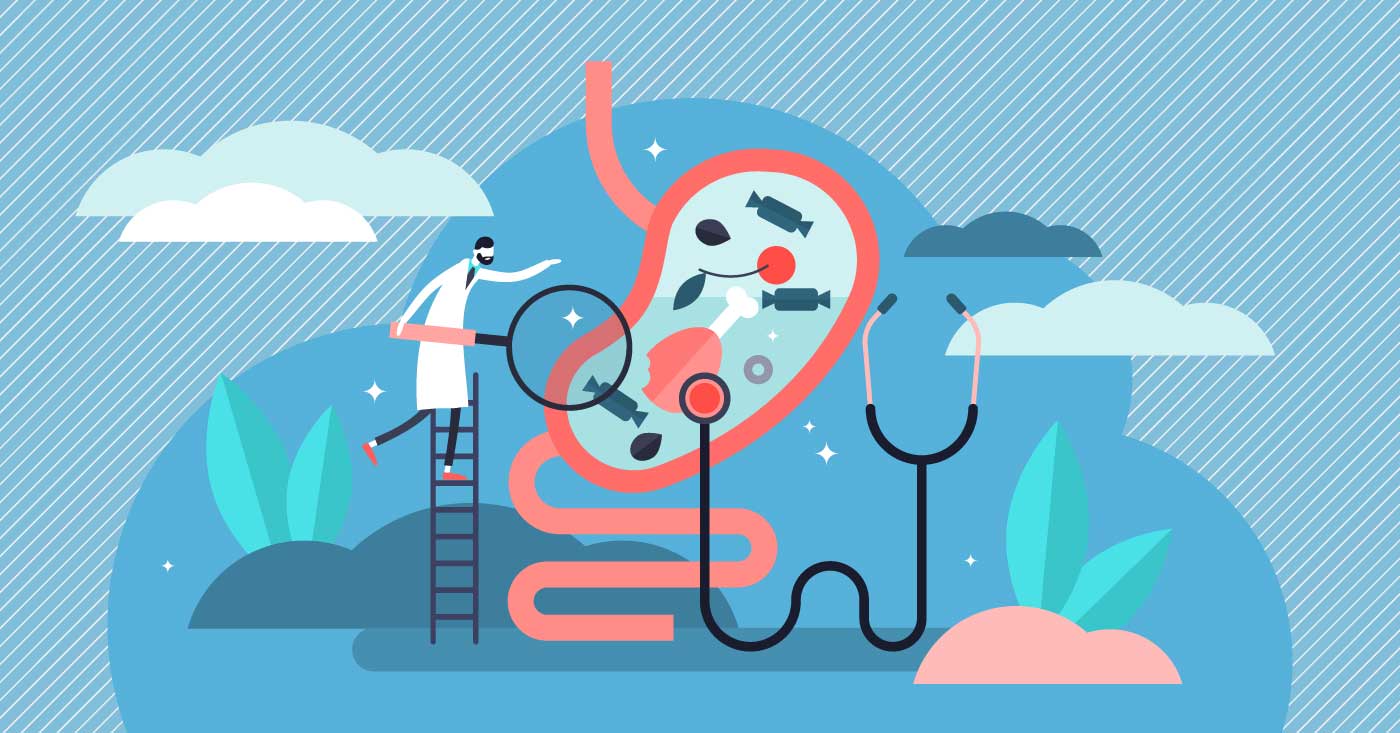Podcast Diaries: The Period Podcast S02E14
Mar. 07, 2020 By BeYou
Why we love this episode:
This episode of The Period Podcast was incredible! Dr Mary Jane De Souza covers issues which are often misunderstood. In particular, this episode covers undernourished periods, and how menstrual disturbances have more to do with not eating enough and adhering to cultural conceptions of beauty than overexercising. Did you know that underfeeding your body can influence your menstrual cycle?
At BeYou, we’re all about body positivity, periods and the deep-rooted cultural norms that need to be broken! Shameless plug over. Click pay below or read along (or just read) to hearts content. You won’t be disappointed.
Listen & Learn:
Transcript:
Many exercising women, competitive or non-competitive athletes, fail to eat enough calories to meet their energetic needs. And this is what causes problems in exercising women. Problems that we often refer to as the female athlete triad.
This is period podcast, episode 14. My name is Kate Clancy, and I'm a professor researching periods, how they affect our life, and how our life affects them.
In today's episode, I interview Dr. Mary Jane De Souza, a professor of kinesiology and physiology at Penn State. She is also the director of the women's health and exercise lab. Dr. De Souza's research focuses on the female athlete triad. The female athlete triad is the unhealthy presentation of the following, three things in an exercising woman. Decreased bone mineral density, low energy availability, and menstrual dysfunction. The first part is pretty straight forward in terms of its consequences. If you have low bone mineral density, you increase your risk of stress fractures, not to mention osteoporosis later in life. The other two parts of the triad are what are a lot trickier, and where you'll find a lot more disagreement among scientists.
Low energy availability means you aren't getting enough energy to meet your needs. This can happen from not eating enough food to fuel your day, maybe from increasing your exercise program and not realizing you need to also increase your caloric intake.
It can also happen from a subclinical or clinical eating disorder. And in fact, many competitive women's sports are replete with disordered eating behaviours. Where we can disagree here is that some people advise that women reduce physical activity to deal with this issue, where others advise to increase food intake.
The last part of the triad, and of course why this topic is relevant to this podcast, is menstrual disturbances. These can range from luteal phase defect when the luteal phase of the menstrual cycle is shortened, which leads to an overall shorter menstrual cycle. To longer menstrual cycles that likely signal that the woman isn't operating. To amenorrhea, which is total loss of the menstrual period. Some researchers are more concerned and some are less concerned with menstrual disturbances. Let's hear Dr. De Souza's thoughts on this with more of my own after the interview.
So the first question that I want to ask actually, I think for our listeners who might not be familiar with your work. Is what would you broadly say that you study?
So my work is focused on understanding the effects of exercise on the menstrual cycle. And to understand the interactions of nutrition, and metabolism, and bone, with the menstrual cycle. So for example, how much does an exercising woman need to eat to support all of her energetic expenditures that occur with exercise training and with competition? And at what point does under-eating have negative impacts on some of these health outcomes? Like bone, like the reproductive axis, like cardiovascular outcomes, like immune function. So all of these different systems can be impacted, obviously by nutrition. So I'm very focused on energetic status and how it impacts the health of all of these systems, if that makes sense. Yeah.
And would you say that most of the women that you study then are athletes, or do you also study amateur or recreational folks as well?
Yeah, I think that's a super good question. So if you notice, I try to refer to exercise in more general terms. I think that yes, of course I've studied a lot of athletes, elite athletes. But I think the larger majority of the girls and women that I've studied have been recreational athletes or club or intramural sport type athletes. I work with a lot of women who are involved a lot with different classes at gyms. Like power, and I don't know all the names of those classes. But all those types of exercise classes that focus on the core or use the high intensity, the new HIIT type exercises. And largely try to educate them around how to exercise in a healthful way so that they are able to retain all the benefits of physical activity on health. So I don't think that my focus is on the competitive athlete. I think it's on just all girls and women in general who exercise in either a competitive or non-competitive environment.
So you said that you're especially interested in the ways in which the healthful components of exercise can be retained. I'm not sure how to word this question. But I guess what I'm wondering is, I'm thinking about to what extent does that mean that you're also sometimes looking at things like exercise amenorrhea or issues like that, people who are actually intentionally overworking themselves to try to achieve a certain body size? Or are you talking about more subtle things than that?
Well, I think you've just asked me a whole bunch of questions there. So firstly, let's understand what we are referring to when we talk about health problems associated with exercise in women. It's not the exercise per se that's causing the problem. And I think that's a really important message to communicate to your listeners. It's not the exercise at all that causes the problem. The problem is the nutrition side. Making sure that these women have enough energy on board to fuel all of their energetic demands. So let's say that another way. We have to make sure that women are eating enough calories so they have enough calories to support all of the energy expending activities that they do. And energy expanding activities include not just purposeful exercise like going out for a run, or going to play tennis, or going to play racquetball. It involves the non-purposeful work. And if they're a student on a college campus and walking all over campus all day, they can easily put in three miles walking around campus in a given day. And those calories often do not get considered, and that's called non-purposeful exercise.
So you have to add up your non-purposeful exercise calories. You have to add up your purposeful exercise calories. And then you have to consider, "Well what does my resting metabolism require? How many calories do I need just to fuel my body at rest?" And that can be in the average young female, as many as 1,200 to 1,600 kcals at rest, depending on their body size and muscle mass. And then on top of it, do they burn 500 calories in purposeful exercise? So now they're up to from 1,600 to 2,100. And are they burning another couple three or 400 with non-purposeful exercise?
So you can quickly see that energetic needs once tallied can be significant. And many exercising women, competitive or non-competitive athletes fail to eat enough calories to meet their energetic needs. And this is what causes problems in exercising women. Problems that we often refer to as the female athlete triad.
So it's not the exercise per se. And I really want to get that point across. It's not fuelling the body adequately. And another point is that some women simply inadvertently under-eat, whereas some women do have some disordered eating behaviours. And these are very different anomalies. Inadvertent under-eating is where women are often relying on cues from their body telling them to eat. And it doesn't always work that way in young women. There are hormones in the body that tell us to eat. There are hormones in the body that tell us not to eat. And in fact, in women who have amenorrhea and they're not getting their period for months and months on end, we see some conflicting signals from those hormones that tell us to eat and those hormones telling us not to eat. They're not working in synchrony as they should be. So relying on these signals is not always a great way to make sure you're fuelling your body. In the same vein that waiting for your thirst mechanism to tell you to be thirsty provides enough fluid intake to keep you hydrated. Well, in this way, the signals telling these young women to eat aren't always working the way we expect them to work. And this can contribute to this syndrome that we call inadvertent under-eating. Women, they're not intentionally not eating, they're just not getting the cues to tell them that they're hungry and that they should should eat.
And then you the group of women that are focused on body weight and have a very strong propensity to try to be thin. We call that a high drive for thinness. And in some cases, some of these women consciously will restrict their food intake. And a lot of women do this all the time.
Take for example, if you went out last night, and you had a big pizza, and you were eating nachos with all the trimmings. The next day, you may restrict what you eat because you overate the pizza and nachos last night. And that's called dietary cognitive restraint. All of us do that a little bit sometimes. The problem is when you do it every day as a way of life where you're consciously restricting your food intake, despite feeling hungry. And that can be a problem. And we call these types of eating behaviours disordered eating behaviours. And we do see some of these kinds of behaviours in female athletes. Now in some cases there are external cues driving these women to try to be thin. There's pressure from society to maintain low body weight, etc. So there's a lot of external cues. And then there are the internal cues where some of these young girls and women are perfectionists, are driven to excel and win. And they perceive that the only way to do it is by having this kind of control over their body. And in some cases, by being extremely thin to do that.
But we know, we've published some data with a colleague of mine that shows that when you are under-nourished, actually performance is compromised. And that was demonstrated in a group of junior elite swimmers who had menstrual dysfunction and they were determined to be energetically compromised and undernourished. And in fact, over the course of a several week training at the United States Olympic Training Center, their performance times got worse. Because performance was measured as it should be during a race and in a competitive environment. So there are a lot of health outcomes that really have to be communicated to these young girls and women.
No, I'm so grateful to hear you frame it that way. Because I completely agree with you that this is the way that we need to be communicating about the impacts of exercise. That actually, exercise is wonderful. You just need to fuel it appropriately. In particular, I'm really compelled what you're saying about this swimming study. I'm just remembering. When I was in college, I ran track my freshman year. And I was a walk-on, I wasn't explicitly recruited. And I was literally surrounded by people who would go on a few years later and be in the Olympics. So I mean, I was pretty outclassed.
And one of my good friends who was a very good person on the team consciously restricted her food. And talked about it all the time. Talked about getting thinner, about eating less, about how important it was. And I had never restricted in my life. I was definitely not someone who did that. But I was feeling so out of place there and like I would never be as good as everybody, that I actually began to restrict along with her. Because I believed that that was the only way I would get good enough. And frankly, I had an okay season. But not a great one, because of that restriction. And I was so bothered by the cultural context of that experience that I ended up quitting track because I just was like I can't be listening to these messages my whole life. That seems really unhealthy. And I went and joined a sport that didn't have any restrictive eating at all. I played rugby after that because I couldn't stand that experience of feeling like well, I must be failing because of what I'm consuming. Whereas now, I am so grateful that the message has largely been reversed that you need adequate fuel in order to perform well.
Yeah. You absolutely need adequate fuel in order to perform well. And I think that point should be appropriately highlighted.
Now one of the questions I had, if I can follow up on one of the things you said. Is you talked about some research where in young women athletes, recreational or otherwise, that there is some dysregulation in terms of the hunger cues they're getting. Can you talk a little bit more about that?
Sure. So we and some others have published papers showing that there is a hormone that's elevated and stays chronically elevated that tells you to eat. And that hormone should have meal excursion so that it goes up when you're hungry, and down when you're satiated, after you've had a meal. And in fact, in women with amenorrhea associated with either exercise or with anorexia, this hormone stays chronically elevated. So that's a good thing. They're being told to eat. These women are under-nourished.
But there's another hormone called peptide YY that's actually telling you not to eat. And that hormone is chronically elevated in these women as well. So understanding what that gets into physiologically is important. And we are suspicious that the hormone telling you not to eat is sort of winning the race and in the hormone hormonal feedback systems in your body. So that's a concern. And that certainly being studied and investigated more thoroughly because certainly some women are under-eating when they should be eating a lot more. And is it more than just a psychological cue or external or internal pressures telling them not to eat, but is there some pathology perhaps related to this hormone that is contributing to, to their under-eating? So that is one important thing that we have written about and have been concerned about.
Sure. And is the hunger hormone that you're talking about, is that ghrelin?
Yes. That's ghrelin.
So we've talked a little bit, and I'm sure we'll get back to it because I want to have you fully unpack this term, the female athlete triad. That probably our listeners are familiar with but maybe don't fully get. But maybe we should start with the positive effects of exercise. Because like you said, it's very healthful. There are lots of great physiological reasons to do it. So maybe we could start there.
Of course. Certainly the female athlete triad does not preclude or exclude all of the benefits of physical activity and exercise on women's health. That our lifelong, we understand that there are cardiovascular benefits to exercise. Exercise can decrease the incidence of some cancers to include breast cancer and colon cancer. Exercise has benefits to glucose disposal and to decreasing the incidence of diabetes and managing prediabetes. It's important for body weight regulation and to help with minimizing body fat and with cardio-metabolic outcomes like cholesterol. Blood pressure is another wonderful benefit of exercise. I mean, the benefits of exercise are long and have been written about for many, many years. And the American College of Sports Medicine has launched this wonderful campaign called Exercise is Medicine to highlight and focus on many of the wonderful benefits of exercise. And certainly girls and women are privy to those benefits. The problem is when they're under-eating and then they have adaptations because of their under-eating that cause some health problems.
So here's a great example around how the female athlete triad might proceed. I was working with a group of athletes, and they were all freshmen athletes, and they were telling me how they felt over-trained and they were running with juniors and senior runners. And the notion was that they needed to train hard enough, which meant doing enough miles until they lost their period.
So the upperclassmen are talking to the youngerclassmen, and they're running with them. And these are the kind of messages that some runners are being given. And that's alarming, because that is extremely untrue. You should get your period every month. It's a sign that your reproductive axis is healthy when you get your period every month. Certainly you don't want to not get your period. Amenorrhea is what we see in postmenopausal women. And they're not getting a period at that point because their ovaries are going through senescence. They now start producing oestrogen in response to stimulation by appropriate hormones. And they stop making oestrogen. And we certainly know that menopause with oestrogen deficiency is associated with lots of clinical problems. Their cholesterol changes, their glucose control changes, their body composition changes, their bone health changes. So certainly, we understand that oestrogen deficiency in postmenopausal women comes with health consequences. So why wouldn't we presume that energy deficiency in young, reproductively mature women would not cause health problems? Not getting your period is not healthy for you. Having low oestrogen is not healthy for you. And that's why the female athlete triad was coined. That's why there's large volumes of papers written or magazine articles written. We tried to spread the word that we want women to exercise, but they have to fuel for healthy exercise. We don't want to see women with amenorrhea.
The most significant clinical problem that is even beyond the amenorrhea is the problems with bone health. These young women lose a lot bone mass. And this is a huge problem because we don't know if we can recover this bone mass. Understand that women reach their peak bone mass at around age 18 to 20, depending on what site we're talking about. Most of the bone mass is laid down by age 18.
So if oestrogen is compromised, if amenorrheic as a young adult, you're compromising your capacity to achieve peak bone mass. And we've been working on the idea of can we recover bone mass if we re-feed women, get them to eat more, we get them to resume their menstrual cycle. Can we recover their bone to a place where it should have been? And so far, we're concerned about that. We have not finished data analysis on our project. We certainly can see a trend in the women that are eating more calories, we can easily get their period back in about on average, three to six months. We are good at getting their period back. It's recovering bone that is much more of a challenge. And that's what young women want to consider, because then they'll enter menopause at a much lower bone mineral density, lower bone strength scores than they would have had they had a healthy reproductive access, healthy oestrogen across their lifespan. And now at the time of menopause are experiencing oestrogen deficiency for the first time, if that makes sense to you.
So I have two thoughts or two questions about that. Because my understanding is that between the ages of 12 and 18, maybe even 12 and 25, part of what marks this period is a period of subfecundity. Certainly there's adolescent subfecundity in the years after menarche. And when I say subfecundity for our listeners, I'm referring to periods of times where you may not have a super regular period, and where hormone levels are not as high as the adult levels that you see that peak between 25 and 35 years of age. So actually what might be normal for young teenage athletes is to have a fairly infrequent period. Simply because if they already hit menarche later, which might be the case if they've been athletes their whole lives. They're going to experience a longer period of subfecundity. And then that also might mean that it's going to seem normal to them to have an irregular period. And it is actually normal for them to have an irregular period at that time.
So at what point, I guess my understanding was I have a much more lenient perspective on what constitutes a normal menstrual cycle. Where for me, I don't really expect super normal, super regular cycles rather of somewhere in the ballpark of 28 days until a woman is in her mid-twenties. But it sounds like your expectations are that those should be achieved earlier.
Yeah, I wouldn't agree with that perspective. Honestly. Well firstly, the reproductive axis matures, the subfecundity or subfertile time periods are largely the result of asking the question, well, is someone obsoleting every single month? Are they getting a period? And are the hormones that are produced during each menstrual cycle, are they healthy enough to cause ovulation each and every month? And frankly, there haven't been a lot of studies that have proven how quickly ovulatory cycles occur. There's some data to suggest it may be as quickly as one year after your first menstrual cycle. And then there are other studies to suggest, well maybe it takes four or five years. But that only takes us to about age 15, 16 at the latest. And in my work in young adult women, we expect to see a menstrual cycle every month. And we expect to see that they're ovulatory. So what can I tell you about that from data that we've collected.
We've collected data in both sedentary women, women who are not exercising, who collect their urine sample every single day for three months in a row. We've done the same thing in exercising women. Not necessarily athletes, just recreational level exercisers who collect urine samples every day for three months in a row. And what we did was we looked at the cycle status from month one, to month two, to month three. Or cycle one, cycle two, to cycle three. And in the sedentary women, the non-exercising women, average age 18 to 22. These women 95% of the time have ovulatory menstrual cycles all three months. They have consecutive ovulatory menstrual cycles. And their cycle length is very, very homogeneous. It doesn't vary much. Doesn't vary much from 27 to 28 days. They're getting a period every month.
What's different is what we're seeing in exercising women. So in exercising women, even subtle experiences of under-eating be it deliberate or non-deliberate, can cause some menstrual irregularities. And there are different degrees of menstrual irregularities. I am less concerned about irregularities that cause hormone changes like luteal phase defects, and even anovulatory cycles are thrown in every now and then. So in our studies, we see an incidence of around 20 to 22% of cycles where at least one of them is a luteal phase defect or an ovulation. But in both of those kinds of menstrual disturbances, these women are getting a menstrual cycle every month, like clockwork. They are not aware that there are subtle changes.
So you may see these women have an anovulatory cycle, and then ovulatory, ovulatory. Or they have a luteal phase defect, an ovulatory cycle, and then anov cycle [anovulation]. So we have characterize this. I've repeated this study a number of times between 1997 and 2010. And we see the same thing, where the incidence of irregular subtle menstrual disturbance is only around 20 to 25% in athletic women. And less than 5%, 3% in sedentary women. So typically, you should expect normal cycles. And most of them are ovulatory.
In exercising women, you may see a higher incidence of anovulation and luteal phase defects. And then you might ask me, "Well, how often are you seeing irregular cycle length?" What we would call oligomenorrhea or a complete absence of cycles in women that previously menstruated. And that is a little bit of a higher percentage. But the point being that it's not secondary to just failure of the reproductive access to mature. It's secondary to high energy expenditure associated with inadequate intake. Inadequate with food intake.
One of the things I wanted to ask you then, because as an anthropologist we tend to take this global perspective of understanding women's health and looking at the range of variation we see across a lot of different human contexts. And it is in the United States a very popular view that the healthiest way to be is to have a monthly ovulatory cycle. To have 27 to 28 day long cycle, to always ovulate. To end up menstruating 400 times in your life. But as I'm sure you're aware, there are some very different contexts. And a lot of this is explained by pregnancy and lactation, but there are a lot of other populations that menstruate far less frequently.
And of course, they're also experiencing bone loss and things like that through their pregnancies. And not always repleting those things in between pregnancies. But they're having a lot fewer cycles. Can you talk a little bit about, I mean I know you may not have done as much work in other places. But can you talk a little bit about how different contexts might lead to different, these sort of different norms being normal for an American versus pastoral, or agricultural, or forager population?
Well, and again. In non-westernized communities that are foraging, their problem typically is high energy expenditure and poor food intake. And low food intake or seasonal availability of food. And in all of those cases, their menstrual cycle is compromised as a result. Which is just underscoring the importance of adequate fuel.
There's been some recent work to suggest that they actually don't, even in more marginal environments, that foragers don't actually have much higher energy expenditure than an American. It might be, I think the point that you make really wonderfully is that nutrition is the thing we really need to be paying attention to. So it could be that they're undernourished. But these are women who are having lots of babies. So they're clearly able to get pregnant, but their norm is different.
Well their norm may be that you have to also put in context. So poor food availability or seasonal food availability is associated with poor cycle fecundity, or periods of infertility. And that's even without physical activity. You don't have to have the element of physical activity. So there are some seasonal foragers who may not have high energy expenditure, but food availability is limited for half the year. And during that half of the year, cycle fecundity is low or fertility is compromised. When food availability is more plentiful and they're eating, fertility improves. And I don't think that's rocket science. I think that's in keeping with exactly what I'm saying. And in folks where there's poor food availability plus high energy expenditure. In the United States, or in North America, or in westernized communities, we call that exercise. In those communities, non-westernized communities, they call that work. So it has to be taken into context.
But when energy intake is coupled with high work energy expenditure, you're going to have the same problem as the female athlete triad. But when cycle fecundity is better, when fertility outcomes are better, then these women are obviously ovulating. And we know that ovulation and reproductive function is tightly linked to food availability, is tightly linked to nutrition status. And I don't think that's new information. We've known that for a very, very long time.
So can you define for our listeners what female athlete triad is?
Female athlete triad is a syndrome that was defined in the 1990s to help girls and women understand the impact of nutrition and exercise on their health. And it's been identified because we were seeing more and more girls and women who were becoming amenorrheic and stopping their menstrual cycle. And we were seeing more and more women with bone density lower than we would have expected. And as such, the female athlete triad includes a spectrum of health from healthy energy intake, healthy menstrual cycles, and healthy bone health. Through a spectrum of poor energy intake that evolves disordered eating or no disordered eating. It involves irregular cycles or amenorrhea. And compromised bone health to include poor achievement of peak bone mass or loss of bone mass over time in these young, physically active women.
And part of the reason that I reached out to you to interview you for the podcast is that you and I had a reaction to an article that discussed the female athlete triad for the 2016 Summer Olympics. The title of the article, which is why I think you and I both maybe, I pointed it out to you. But you had been I think reached out to for the piece. This is in August 18th, 2016. And it was during the Summer Olympics. The title was How exercise can shut down women's periods — with dire health consequences. And the article then did kind of a really awkward transition from discussing Fu Yuanhui's, she's an Olympic swimmer from China. Her frank conversation of having her period and her discomfort during her period to then say it turns out if you lose your period, it's really bad for you. Or rather the exercise can shut down your period, and that's super bad. And I think there's even a screenshot of one of your articles towards the end, if I remember correctly. And they certainly cite some of your work in it. But then at least conversations we had after the article was published makes me think that you did not like the angle that this journalist took.
Well, I don't think that exercise is bad for health. And honestly Kate, I can't remember what that article said exactly. If you want to refresh my memory, maybe I can comment on it more.
Sure. Let's see. So it talks about female athlete triad. It says, "As the number of female elite athletes has skyrocketed in the past 24 years, researchers say women are at risk of the female athlete triad. A spectrum of conditions that includes low calorie intake, missed periods, and loss of bone density." And then it discusses how long distance runners and ballerinas are maybe more susceptible. They talk about the dire longterm health consequences, which are increased risk of osteoporosis and bone fracture, heart attacks, infertility, and vaginal and breast atrophy. Then they say according to an international Olympic committee, that few women are actually aware of the fact that they may have this or that they're susceptible to it. And let's see. What are some other points? It does sort of embed it in the article after the first heading or two. They do say, "The issue is not exercise. It's exercise when coupled with eating too few calories." But it's really, to my mind, it's embedded pretty deep in the article. And they lead with exercise is what's ruining you. So I think that was sort of what my reaction, that's what I remember was one of the things, your reaction.
It's pretty silly to try and write an article that says exercise is bad for you. And that's completely missing the boat and not communicating the true meaning of what the female athlete triad is about. We've published papers amongst the experts in area of the female athlete triad that have shown clearly, it's not the intensity of exercise. It's not the volume. It's calorie intake that must be adequate to meet expenditure needs. It's just that simple. And when women are fuelling adequately, we tend to not see these kinds of health problems. There is the nuance of stress, and stress impacts each of us very, very differently. And stress may play some role in menstrual disturbances. Not only in athletic women, but certainly in non-athletic women and other arenas. So there's the stress hypothesis. But for our purposes, we're talking about adequate fuel to support energy expenditure needs. And I think we've talked about this all during this interview for the purposes of exercising women, for the purposes of non-westernized communities that are working, tilling the field, going from one mountain to the next during the monsoons. The examples really go on and on. And I think to suggest that exercise is unhealthy or to make the suggestion that we as female athlete triad researchers are saying that exercise is unhealthy is a really unreasonable suggestion.
Sure. So I have two questions then about just a little bit more on trying to understand consequences of under-eating with exercise. One is in the last couple of decades, the body size of American women and men has increased. So there are lots of recreational athletes who are probably, if you're looking at their body mass index, they might technically fall into overweight or obese category even though they are athletes and working out hard, and are across many measures, probably very healthy. Have you studied heavier women or women that clinicians might call not normal weight? But again, these are actually probably healthy women. And looked at whether there are consequences for them or whether they're different at all in terms of this possibility of under-eating.
That hasn't been something that's been my forte. Certainly we've worked with some overweight women. And there are many an athlete or exercising woman may bring some overweight scenarios to the exercise environment. And in some cases, it's associated with excess androgen production. And we call this hyperandrogenism. And in some cases it's associated with polycystic ovarian syndrome. And that's a syndrome that's associated with being overweight, having higher percent body fat, having higher androgens, and having higher insulin levels, and what we call insulin resistance. And in those women, the health sequelae involve things more like infertility and cardio-metabolic risk associated with altered glucose metabolism because of the high androgens. So it's just a different metabolic pathway that we're concerned about in those women.
It seems to me, though it could also be that I'm just missing some literature. Is that in particular when studying female athletes, the focus has been on aerobic activity. Have you studied people who are power lifters, who play more contact sports that maybe require greater muscle mass? Like I was mentioning I played rugby before. And are there different effects of those types of exercise compared to say the exercise classes and long distance running phenotype?
Well, certainly we see more cases of the female athlete triad in lean based sports. And that's well published. So in cross country runners, in gymnasts, in figure skaters, ballet dancers. Anywhere where leanness is valued in that sport, we see a high incidence of the female athlete triad. In team events, it's not that we never see the female athlete triad. But it's observed less frequently than is observed in lean based sports.
As for power lifters, I haven't done any work specifically with power lifting. But most athletes these days are cross training. And most of them are involved in very well developed strength training programs. So to that extent, we have studied women who are cross training and doing resistance training. Have I ex exclusively focused on, I don't know, power lifters or bodybuilders? No, I haven't. Have I studied them more individually? Sure, of course I have. And we've seen cases of the female athlete triad in all types of athletes. It's just less frequently observed in those types of athletes. And again, it still comes down to fuel intake and energy intake.
And I have one other question for you, especially related to the fact that like you said, the real issue here in terms of health consequences is on intake. I feel like I've been reading a lot of material lately on how energy balance is no longer as simple as just calories in, calories out. And that we should be paying more attention to variation in how people metabolize foods or digest foods. And in just macronutrient percentages. So like how many protein, fats, carbs. How much does that enter into the work that you do? And how important do you think it is to understanding female athlete triad?
Well, for our purposes, we have quantified volume of calories. And when the volume of calories is too low to meet energy expenditure, we see incidence of the female athlete triad. When we see women who are true vegans and are having absolutely no protein intake from any plant or animal sources, we see a higher incidence of the female athlete triad. Even vegans who may eat some protein, be it some plant, maybe perhaps some animal sources. We still see a higher incidence of the female athlete triad. We look at energy density, how dense is the diet. And we've reported that women with the female athlete triad tend to have a lower energy density. That would be a less fatty diet than women with a high density diet. So we have looked at those factors. Macronutrient composition has been, I think pretty normal in all the work that we've done except in the examples that I've described.
Is there anything, if there was one last message you felt like you could really impart to women who enjoy their elite, amateur, or recreational exercise. What would it be?
It would be that they try to understand what their energy needs are and to be sure to fuel adequately so that they can enjoy all the benefits of exercise without any risk of compromising those benefits by under fuelling. And to become educated about the female athlete triad, and to share that education with women who are exercising around them.
What I hope you've picked up on here is that the female athlete triad has more of a behavioural origin than what you might have first thought when you heard the definition. What I mean is it's not that women's bodies are weak or ill-equipped to handle high intensity exercise. Instead, my suspicion is that cultural pressures to be thin lead to restrictive eating patterns across many different types of exercising women. It's the restrictive eating, subclinical eating disorders, and eating disorders that lead to a loss of bone mineral density and loss of the period.
Finally, in my opinion as a scientist, not as a medical doctor. And I am not dispensing medical advice here. Losing your period isn't on its own wrong. Instead, it should first serve as a signal that you are in some way energetically, immunologically, or psychologically under-nourished. It's only if you can rule these out that you should assume that there's something wrong with you. Or that in some way, in which you aren't getting enough resource in your environment.
So fuel your bodies, respect that they need food, and then kick ass with your Couch to 5K training, your kickboxing class, or your powerlifting, roller derby, or yoga obsession. And next week, we'll explore this topic a little more with intuitive eating coach Lu Uhrich. That's it for this week's Period Podcast.
Shownotes:
Excerpt: We learn about the female athlete triad, and how menstrual disturbances have more to do with not eating enough and adhering to cultural conceptions of beauty than overexercising.
Summary: Last year, Vox ran a piece about exercise and periods that made my blood boil, not least of all because it misrepresented the research of someone I really respect. It took a while to coordinate our schedules, but I was very pleased to finally get to interview Dr. Mary Jane De Souza. Dr. Mary Jane De Souza is one of the best researchers in the world on the topic of the female athlete triad – that mix of low energy availability, low bone mineral density, and menstrual disturbance that was once believed to be inevitable for exercising women. I was so pleased to have the chance to pick her brain about food, exercise, and periods. We now know that the cause of these menstrual disturbances is probably more about undereating than overexercising. So if you lose your period, it’s not your weak lady constitution, it’s more likely you haven’t fuelled your exercise with enough food.
Many thanks to Dr. Mary Jane De Souza, professor of kinesiology and physiology at Penn State. Stay tuned for next week when we continue the conversation around food, exercise, and periods with Intuitive Eating coach Lu Uhrich.
Do you want to be a patron, or is there someone on your shopping list who would want to be? Check out my new Patreon page for ways to support this podcast. Help me make beautiful things!
Want a better PERIOD?
Subscribe to PERIOD so you don’t miss an episode! Subscribing, especially on iTunes, helps us a ton with promoting the podcast and getting the word out to more people. So does leaving a review, so please do that too!
Call or write me! I am collecting two things right now: your period questions, and first period stories. Leave me a voicemail with either or both at 262-PERIOD-2 (262-737-4632). Don’t forget to tell me how to contact you if you don’t mind my following up.
Other ways to contact me:
- Email me at periodpodcast2 at gmail dot com
- Find me on Twitter at @periodpodcast2 and @kateclancy
- Finally, you can also find information about the podcast at Period Podcast on Facebook
I can’t wait to hear what you think! Thanks for listening!
Direct download: here
Permalink: here
RSS: here









